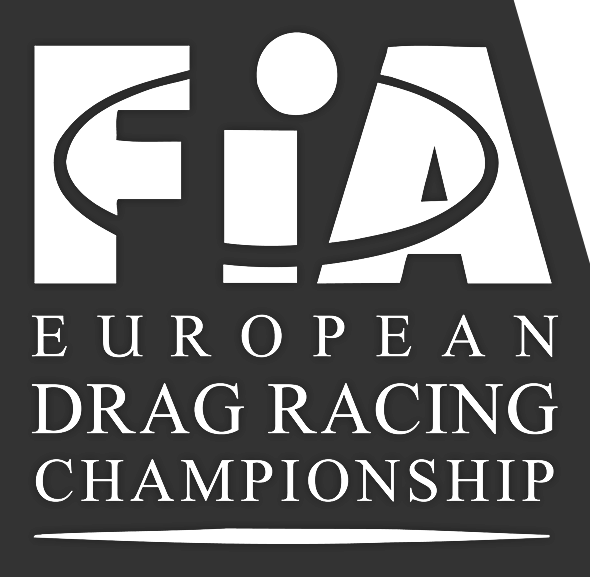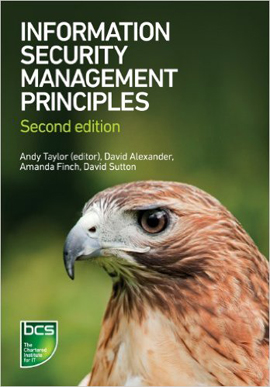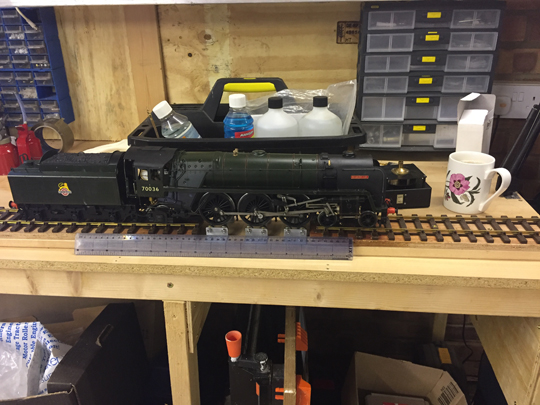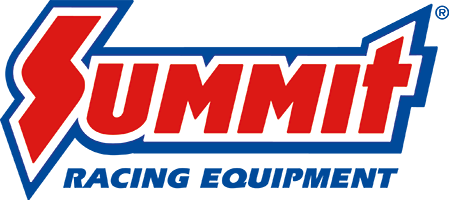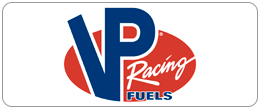Dave Alexander, 30 years in Top Alcohol/Methanol, a good number to retire
Most visitors of Santa Pod Raceway will know Dave Alexander as the co-commentator of the Top Methanol class. But almost 40 years after watching his first drag race and 30 years involvement in Top Alcohol/Methanol, the 2017 European Finals was his last official appearance. Time for an interview with this man who was so deeply involved in the sport in so many different ways.
Dave Alexander was born in 1961 and lives with long-term fiancée Lucy near Northampton, about 26 miles from Santa Pod Raceway. He saw his first drag race almost 40 years ago and was hooked. Ten years later a weather station made him join Steve Reads team, the start of long career in drag racing as a mechanic, writer, photographer, commentator, official and many more. In this interview Dave Alexander looks back on all those years in the sport, but also on some very interesting things less people will know, as his daily jobs and his hobby.
Although you spent so much time in drag racing, it was ‘only’ a hobby. What do you do for a living?
I have 2 jobs:
I am Managing Consultant of the cyber security practice for a global consultancy based just outside Cambridge. I am not a salesman, I’m hopeless at selling anything. I’m a ‘deep geek’ solving complex technical information security problems for clients and doing research and development into new technology and cryptographic protocols. At the moment I’m working on the security of autonomous vehicles, intelligent traffic systems, smart meters and securing Internet of Things technology. Let’s just say I don’t have any IoT products in my house and don’t plan to either. I’m also a Chartered Information Security Architect. I admit to a long string of professional letters after my name.
And I am now Visiting Professor of Network Security at a University here in the UK. I teach students on their Information Security MSc program. My job is to teach ‘applied network security’ as it is done in the real world, not the pure theory. I studied for my MSc there as a (very mature) distance learning student and when I graduated they asked me to join the staff on a part-time basis and help them teach because I had more than 20 years practical experience. The full-time staff are all highly intelligent people but they have spent their lives in academia, not doing this job in the face of real-world challenges. That’s where I add value.
I am a Fellow of the Institute for Information Security Professionals and also of the BCS. I am co-author of the standard introductory textbook on Information Security Management Principles (available from all good online retailers) and just starting work on the 3rd edition. I can thoroughly recommended it as a cure for insomnia if you’re not in my profession!
Do you have other hobbies beside drag racing?
I am a self-taught model engineer. For the most part I make Gauge One model steam engines, actual working ones that burn Isopropyl Alcohol instead of coal to heat distilled water, make steam, drive pistons, etc. Here’s one I made on my workbench. The mug of tea (I am a tea-a-holic) gives some idea of size. It’s a 1:10 scale model. Lucy knows that if she can’t find me anywhere else I’ll be in my workshop.
Earlier this year I bumped into Carlo Gandolfi at a model engineering exhibition, neither of us knew that the other was a model engineer, only with him its radio-controlled cars. This is a panoramic view of my workshop at home.
How did you get involved in the sport and when was that?
I first went to Santa Pod with a friend to watch in about 1978/9 when I passed my driving test. I had seen it on TV and it was less than 30 miles to the Pod. I was hooked, but I joined the RAF and became a pilot so that meant I wasn’t in a position to get more involved then.
After my accident and leaving the RAF I went back to Santa Pod for the first time in many years. Steve Reads team had one of the first weather stations and weren’t quite getting the hang of calculating corrected altitude (something pilots do all the time). I got talking to them, wrote down how to do it and then accepted an invitation to visit their workshop outside Wallingford. The next thing I knew I was on the team as the world’s most junior mechanic with everything to learn. Tim Read was very patient and taught me a great deal, I owe him a lot for that. I’ve been involved in Top Alcohol/Methanol for 30 years. As the old joke goes “you would get less time in prison for murder” I reckon that’s a good number on which to ‘retire’.
You did so many different things in the sport, can you tell us something about that?
How long have you got? I worked on Steve Reads crew until Roy Phelps suggested that the pro comp teams formed the Professional Alcohol Racers Association. Daddy Stone was the chair but I was asked to be the secretary. I don’t know why they asked me, perhaps they thought I was better with words than I was with a spanner (definitely true back then) but they did and that was the start of the ‘slippery slope’ to everything that followed. I learned a lot from Daddy Stone, he was a fantastic mentor and full of the funniest stories, none of them repeatable in public. I also got to talk to all the other teams, finding out information and getting to know them better. We then became the European Top Alcohol Racers Association (it was still the Top Alcohol class then). Because of my job I had early access to the internet and a personal internet account back in the mid-90s. I taught myself some basic http and created what was the ETARA website. There were very few of us online then. It was one of the first European drag racing websites (still going as etmra.com). It’s still a very basic website, nothing fancy, I’m not a programmer or web designer.
Commentary
The colour commentary role came about because I was writing notes on the Alcohol cars for the commentators to use during each round of qualifying and racing. One day I took them up the tower and they gave me a microphone and told me to read them out myself. I can’t remember how long ago that was. They seemed to like what I did and I’ve been doing it ever since. At Alastaro they asked me to do an English language commentary on all the FIA classes for the benefit of the overseas visitors. That meant I got to work with Jami and Rautsi with whom I got on very well, we laughed so much. We also share the same taste in music (heavy and progressive rock). I went back for about 4 years and did the same thing. Jami and I are still friends now. If Ryanair hadn’t stopped flying to Tampere and Turku I wouldn’t have stopped going.
Fire-Up magazine
Because of the colour commentary work I was doing I was asked to write some preview program notes for the class to put in the Santa Pod Programmes. I suspect it was those articles that brought me to the attention of John Wright and Jerry Cookson who were starting Fire-Up magazine. I say ‘suspect’ because I never did ask them why they approached me to contribute. I simply said ‘Yes’ and got on with it. That was a great magazine and along with Jim Barnes we made a great team. I got to interview some amazing people and write their profiles. I also wrote a piece about the tour that Al O’Connor and Lesley Digby (now the charming Mrs Wright) did racing in Super Gas in the USA. I was very proud when they read it and told me that I was the only one who wrote about their trip that ‘really got what Super Gas Was about’. I’m sure that was because I was so embedded in the drag racing life that I knew the classes and what it took to be a racer.
We had a habit of saying what we thought in the magazine, which didn’t always please the track owners. I remember we sometimes used to get temporarily banned from selling the magazine at a track because we had been critical about something or exposed someone who was being ‘economical with the truth’. I wrote a column called ‘Soapbox Corner’ that would be complimentary or critical as I thought necessary. Jerry was very supportive, I don’t remember him ever asking me to rewrite a piece or deleting anything from a column. It was a very sad day when it ended. I would do it again in a heartbeat. I still have the Fire-Up shirt in my wardrobe as a proud memento but it wouldn’t fit me now. I may have put on a kilo or two (Ok, fifteen).
Photography
The photography was something I did before I started commentating – you can’t be in two places at once. I wouldn’t say that I had the best equipment but I knew how to compose a shot and I watched each car and bike and learned how they behaved as they burned out and launched so I knew where to stand to get the best shot of each one. I sold some pictures and some of the racers would ask me to take some for them if they had a new machine or paint job. I wasn’t ever in any danger of breaking even let alone making a profit, it was just fun to do. Looking at the lenses they use now I wouldn’t dream of spending that kind of money on photographic gear.
Most proud of?
I guess I’m most proud of being asked to represent the TMFC class at the ‘board’ meetings for all the FIA and FIM classes and the track owners and promoters. I was able to help represent the racers and ended up writing numerous letters on behalf of all the classes to the FIA Drag Racing commission about things we were unhappy about (usually safety related) and working with the stewards and race directors. On the whole it was a positive experience and we made a difference.
Highlight in the sport in all those years you were involved?
That is a very hard question to answer. It’s been 30 years of one highlight after another. Every time I thought ‘now I’ve seen everything’ another amazing event would happen. I would have to say just being part of the ‘Top Methanol drag racing family’. I have made some wonderful friends who have made me very welcome. Their kindness and generosity have made my work much easier and such a pleasure to do. They have patiently answered my questions, round after round, explained things and taken me into their confidence to explain things. I have been made welcome, fed, had some great laughs (with the teams of Arvid Grødem and Dan Larsen in particular) been given beer, t-shirts, lifts to tracks and places to sleep in trailers all round Europe. I have loved every minute of it. They are memories I will treasure for the rest of my life and I owe them all a huge debt of gratitude.
How many different race tracks have you been to?
I think it’s 11: Santa Pod, Long Marston/Shakespeare County Raceway, North Weald, Elvington, Alastaro, Mantorp Park, Gardermoen, Pitea, The F1 circuit in Austria for the 1/8th mile races, Hockenheim, Pomona for the World finals.
Favourite race meeting?
I’m afraid I can’t choose between two. There was one at Long Marston (as it was then) in ’88. If I remember correctly we set a world record for the 1/8th mile with the Readspead dragster with a Donovan motor in it. I don’t claim any of the credit for the tuning but I was very proud just to have been part of doing it. I also remember Mike Matthews telling a joke over the PA that had the whole pits on the floor laughing. I couldn’t possibly repeat it in public but I still remember it 29 years later…The other one is the Finals meeting at Santa Pod where we had 23 Top Methanol dragster and funny cars. I was run off my feet trying to get round them all between rounds but it was the most we ever had at one meeting.
Why do you stop?
In part it’s because the damage my body took in my flying accident is now catching up with me. I’ve had some mobility problems in the last year or two and my orthopedic consultant has told me I have to stop being so active or I risk losing a leg. I simply can’t get round the race track like I used to. I’ll still come along for a day at the Main Event and Finals meetings to watch and keep up with old friends, but I can’t do three or four days of being active any more. It’s also because more of my time between races is taken up with my day job and university lecturing. Teaching the next generation to build secure networks is increasingly important as the world becomes increasingly dependent on them.
Anything else you want to tell?
For a while I was the MSA competition coordinator for the British Drag Racing Championship, before it moved to the Pro-Mods. That was also a role that I took over from Daddy Stone. It gave me the opportunity to get involved in writing and updating the rules and to have a small say in the safety aspects of the sport in the UK. We’ve all seen big accidents, some of them with tragic consequences. I just wanted to help keep some of my friends alive and in one piece. The kinetic energy in racing vehicles is much more dependent on its speed than its mass (½ mass x velocity2 ) so as the speeds have increased the energy has gone up dramatically and the vehicle doesn’t stop until it’s all gone; that makes accidents bigger (higher g loads) and last longer. The kinetic energy in a TMFC doing 270mph at the finish line is more than double what it was when it was only reaching 220mph, as they were when I joined Steve Reads team. That’s why concrete barriers all the way down the track, the much stronger mesh fencing and all the safety features on vehicles are so important. The MSA had the view that a race track ended at the finish line so they were not bothered about the existence of barriers after that. Their chief track safety expert thought of me as a pain in the a**e, but he eventually came to accept that the phenomenon of soil tripping (google “the physics of rollovers”) at high speeds would kill more and more racers as speeds continued to increase. I hasten to add that I only played a small part in changing their views, but eventually he had to listen. I am proud of helping to improve that aspect of safety.
I’m also very proud of having been at the meeting that was the founding of Speedgroup and seeing history in the making. I have every confidence that it and all the racers will go from strength to strength and I wish you all the very best of luck now and in the future.
And that’s probably a good place to stop.
